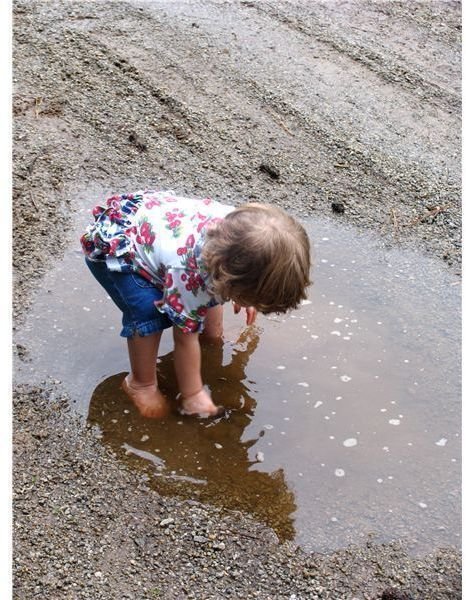Five Safe Ideas for Infant Sensory Play: Baby Cereal, Fingerpainting, Cheerios & More
According to Jean Piaget’s theory of cognitive development, infants and young toddlers are in the sensorimotor phase of development. Sensorimotor means that infants learn by moving and using all of their senses. As any infant caregiver knows, babies explore everything with their mouths. While this is perfectly normal and should be encouraged, it does present a few safety challenges.
There are many things an infant teacher must take into consideration when planning a sensory activity. Since most materials will be handled and mouthed, the activity must be closely monitored by at least one adult at all times. All objects used in any activity must be sanitized before and after the activity, and removed from the area and sanitized once they are mouthed by one child. Any food used must be small enough or easily dissolved so as not to present a choking hazard. All allergies and parent preferences for food choices must be taken into consideration.
Safe Infant Sensory Projects
While it may take a bit of planning and set up, it is definitely possible to present an array of different safe infant projects for sensory development in your classroom. Infants should be presented with at least one focused sensory activity each day. Repeating a favorite activity more than once per week is okay, but be sure to present as many different kinds of sensory experiences for infants as you can.
Cheerios Pickup: Be sure to discuss this activity with parents before allowing children to participate. Older infants and young toddlers are learning to use their pointer finger and thumb together in a pincer grasp. In order to give babies a chance to practice this important milestone, allow them to pick small ‘O’ shaped cereal up in their hands. Many babies will rake the cereal towards them with their palm or fist. Some will grasp handfuls of cereal in their fists. Show them how to use a pincer grasp by catching their attention and using it yourself. Do not attempt to manipulate a child’s hand into this grasp, but be sure to applaud any efforts the child shows.
Baby Cereal Texture Touch: Place one cup of dry infant cereal flakes (such as rice or barley) in a small sensory bucket or tray. Allow babies to explore the texture of the dry cereal with their hands. Babies may place a few flakes in their mouths, which is perfectly safe and probably will not taste very good! Show the infants how to use their fingers to draw lines in the flakes or touch the flakes softly with their palms.
Soapy Water Play: This activity is most appropriate for older babies, but can be changed slightly and used with any age infant or young toddler. Fill a sensory table or tub with warm water and a few drops of liquid baby soap. Place a few bath towels on the flower surrounding the table to prevent the floor from becoming too slippery. Allow babies to use their hands to splash in the water and explore the bubbles. Older babies and young toddlers may enjoy playing with a few sturdy plastic baby dolls, washcloths and plastic cups in the water. Be sure to wash children’s hand before and after this sensory activity.
Fingerpainting: It is possible to plan a fingerpainting activity with infants if you use a non-toxic or edible paint recipe. One simple idea is to mix a few drops of food coloring with plain yogurt. The results dry with a high shine, and you don’t have to worry about the infants mouthing the paint. A good idea for infant fingerpainting projects is to let children explore the paint on a low table or high chair tray. When they are finished, place a piece of paper over the tray or table and make a print of the finger-painted design they have created. This is much easier than attempting to direct an infant to paint on a piece of paper.
It takes a bit of creativity to plan safe projects, but it is not impossible! If you have any additional ideas, please share them in the comments!
References
- Photo Credit: Anita Patterson - http://morguefile.com/archive/display/73230
- Reference: “Infants, Toddlers and Caregivers”; Janet Gonzalez-Mena and Dianne Widmeyer Eyer; 1992
